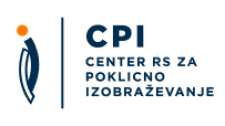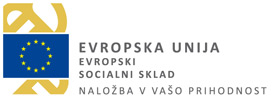Elektrotehnik/elektrotehnica
Selected qualifications
| Name of qualification | Name of qualification: Elektrotehnik/elektrotehnicaAdd to comparison |
|---|---|
| Translated title (no legal status) | Translated title: Electrotechnician |
| Type of qualification | Type of qualification: Upper secondary technical education |
| Category of qualification | Category of qualification: Educational Qualification |
| Type of education | Type of education: Upper secondary technical education |
| Duration |
Duration of education:
2 years
|
| Credits | Credits: 120 credits |
| Admission requirements |
Entry conditions:
The programme can be attended by anyone who has completed the programme of secondary vocational education and acquired one of the following titles:
|
| ISCED field |
Field:
Engineering, manufacturing and construction
|
| ISCED subfield | subfield: electricity and energy |
| Qualification level |
SQF Level:
SQF 5 |
The holder of the certificate is qualified to:
- read, plan, elaborate, monitor and amend technical documentation in line with requisite instructions and by employing ICT;
- programme simple applications on programmable devices as well as programme, assemble and wire programmable relays;
- lay and wire different forms of electric and communication installations, connect users and carry out basic maintenance works;
- connect electric installation elements in switching, distribution and outlet-coupling devices as well as select and connect electrical protection;
- perform basic measurements and maintenance works of electrical and communication installations, interpret results and identify errors;
- set up necessary operating system settings and provide basic support to users when employing user software;
- adhere to measures for safe work with electrical appliances;
Optional:
Planning electrical installations
- connect users by employing remote control elements;
- carry out electrical engineering calculations by way of design procedures of user circuits and protection;
Electro engine drive and regulation
- connect and test engines for safe operation, draw up measurement protocols and mechanically connect the engine on the powered machine;
- perform wiring, connecting, programming and setting up of parameters of primitives in control and regulation systems and carry out regulations;
Power generation and transmission
- prepare and manage simple assembly and maintenance works on production and transmission facilities;
- perform less complex switching manipulations in power generation and transmission;
Computer equipment maintenance
- compile, maintain, rectify errors and service computer hardware;
- protect the system against abuse and programme intruders;
Distribution network management
- prepare and manage works in distribution networks;
- draw up power supply contracts;
Regulation in automated units
- make and maintain simple pneumatic, pneumatic-electric and hydraulic controls;
- programme, assemble, set up, monitor and control the operation, carry out measurements and rectify errors in simple automated units;
Use of microprocessor appliances
- plan and programme microprocessor wiring;
- control, capture and regulate with microprocessor wiring;
Power generation and conversion
- be familiar with basic production principles and the relevance of satisfying power needs;
- connect, set up parameters and maintain electrical and mechanical converters;
Information transfer and recording
- select, assemble, set up, manage and repair audio and video system components;
- set up local HF networks and install aerial devices;
Multimedia technology equipment
- record, archive and reproduce sound, image and video in digital format;
- design preparation of photos and videos;
Audio-visual communications
- manage computer hardware and software for recording/editing/reproduction of audio-visual contents;
- use computer formats to record text, graphic, video, sound and other media contents;
Web applications in multimedia technology
- plan development, setting up, upgrade and maintenance of a web portal and web applications in line with customer demands;
- manipulate database data;
Computer design
- use digital photo capture devices;
- design web sites and other documents for the electronic media.
In addition, the holder of the certificate also upgraded his/her key professional skills and competences with key general knowledge and skills in line with national standards.
Students' vocational abilities and skills and the fulfilment of conditions to obtain credits in accordance with the relevant education programme are established through verification and assessment. Assessment of students also takes into account non-formally acquired knowledge, which must be adequately demonstrated. Students are assessed using grades from 5 (excellent) to 1 (inadequate).
Students may progress to the next year if at the end of the academic year they achieve a passing grade in all general education subjects and relevant vocational modules set out in the school's operational curriculum, and have completed all extracurricular activities and practical on-the-job training, or progress on the basis of a programme faculty decision.
Elektrotehnik/elektrotehnica
SQF 5
EQF 4
The Career path tab shows the possible career path within the selected qualification area, which is not the only one and is not mandatory. The actual transition between qualifications, which is determined by law, is defined in the Transition tab.
SQF 6 / EQF 5
Matura/vocational course, higher vocational education (SQF level 6), professional higher education (SQF level 7) and academic higher education (SQF level 7)
Students must successfully (i.e. with passing grades) complete all general education subjects, compulsory vocational modules, elective vocational modules and the open part of the curriculum. They must also complete extracurricular activities and work placement requirements and pass the vocational matura examination. The vocational matura comprises a compulsory section (written and oral examinations in Slovene and electrical engineering) and an elective section (written and oral examination in a foreign language or mathematics and a product/service with oral presentation).
Vocational and technical secondary schools and adult education institutions.
URL
Awarding body URL:Upcoming event
International Conference: 10 years of Slovenian Qualifications Framework
International Conference: 10 years of Slovenian Qualifications Framework Brdo Congress Centre, Predoslje 39, 4000...
© Center RS za poklicno izobraževanje, 2018. All rights reserved
Sitemap General legal notice Cookie Policy Production: ENKI






